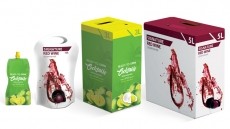New baking method increases volume and shelf-life
which promises longer shelf-life, improved texture and greater
bread volume.
The main ingredient in the patented process is sugar beet pectin which is extracted from sugar beet pulp and contains ferulic acid.
Pectins are used in baking to aid absorption of water, increase bread volume and give a soft, appetizing texture but citrus-based pectins are in widespread use throughout the industry rather than those from sugar.
The present patent, published last week, claims bread made from sugar beet pectin is softer, lasts longer and can cut commodity costs for manufacturers as less pectins are used to produce better results and increase bread volume.
In the invention, sandwich-type bread is used as an example of the process which uses water, salt, yeast, wheat flour and the sugar beet pectin as the foundation of the dough's composition.
It is theorised that the improved performance of this particular type of pectin is due to its ferulic acid content which is not found in citrus pulp or fibres.
Ferulic acid works in the baking process to bond pectin molecules to gluten in the dough.
According to the patent invention, "this results in a more highly networked dough structure offering increased baked bread volume and softness, among other benefits."
For optimum results, the inventors used sugar beet pectin at a concentration of between 0.3 wt per cent and 0.65 wt per cent.













